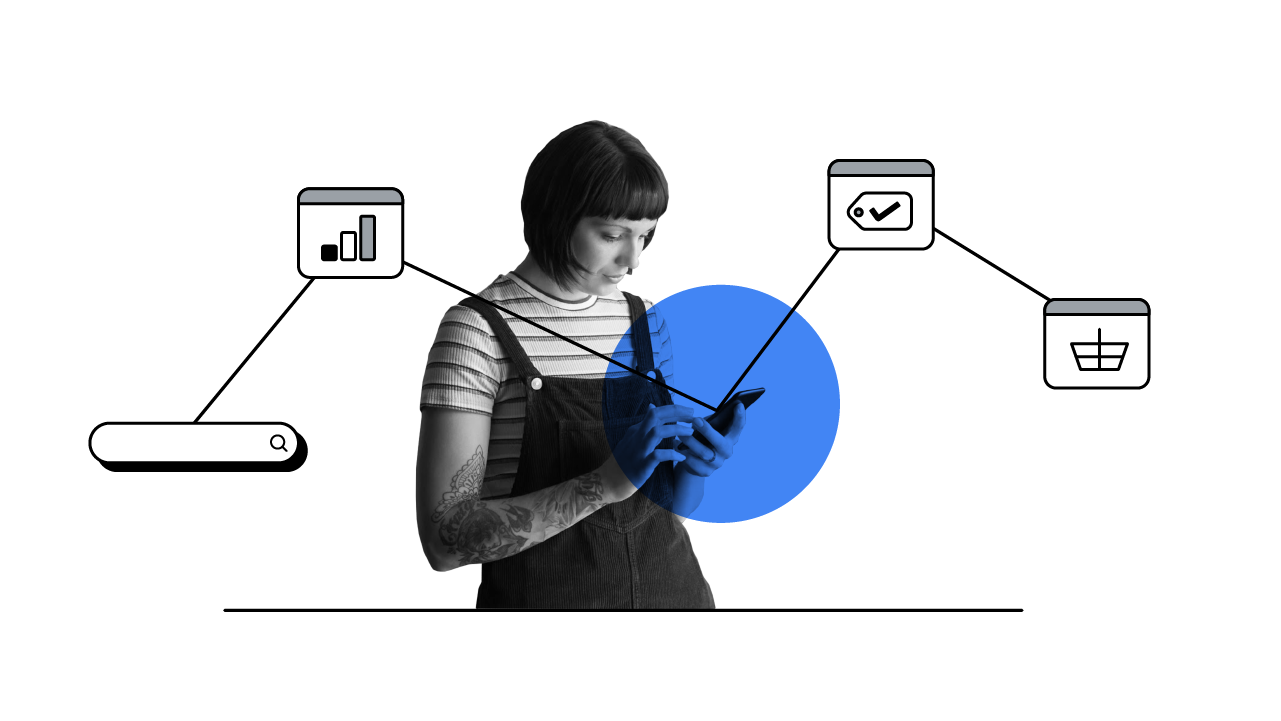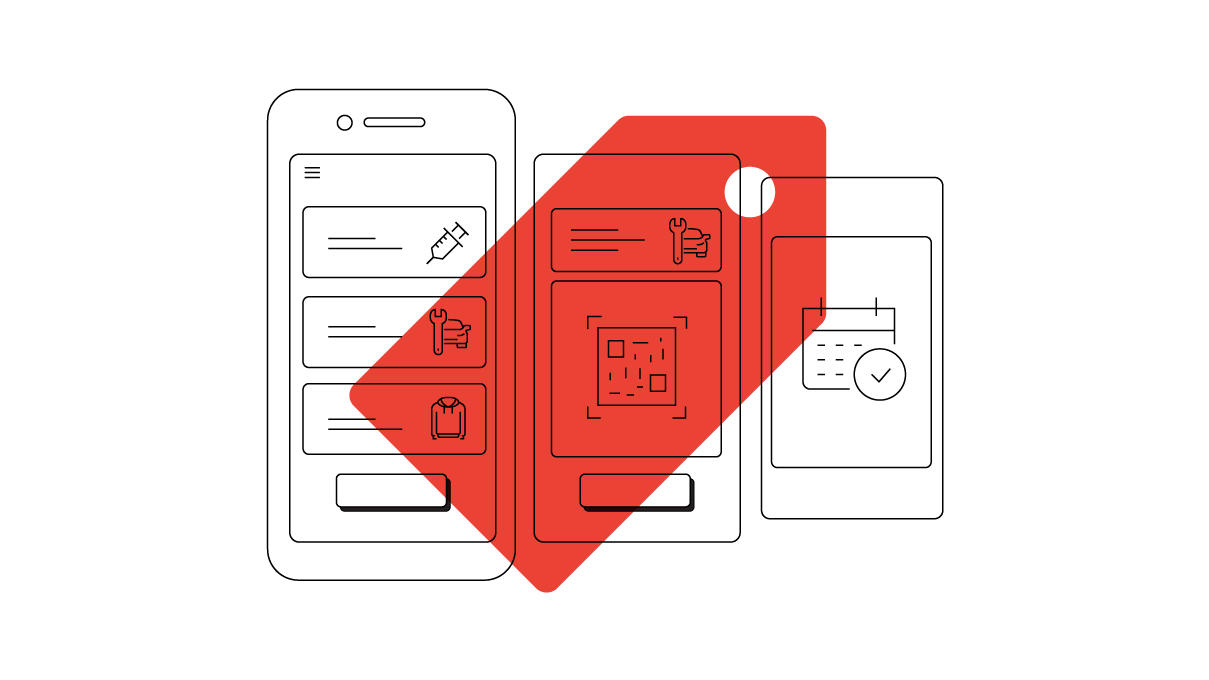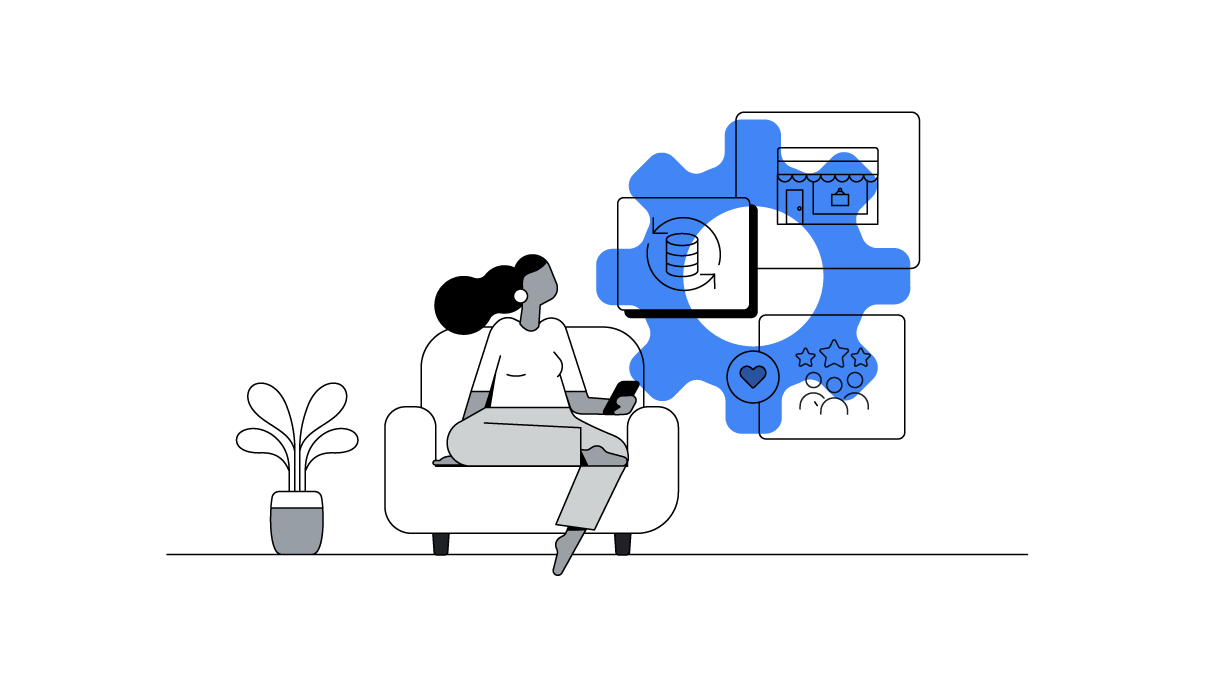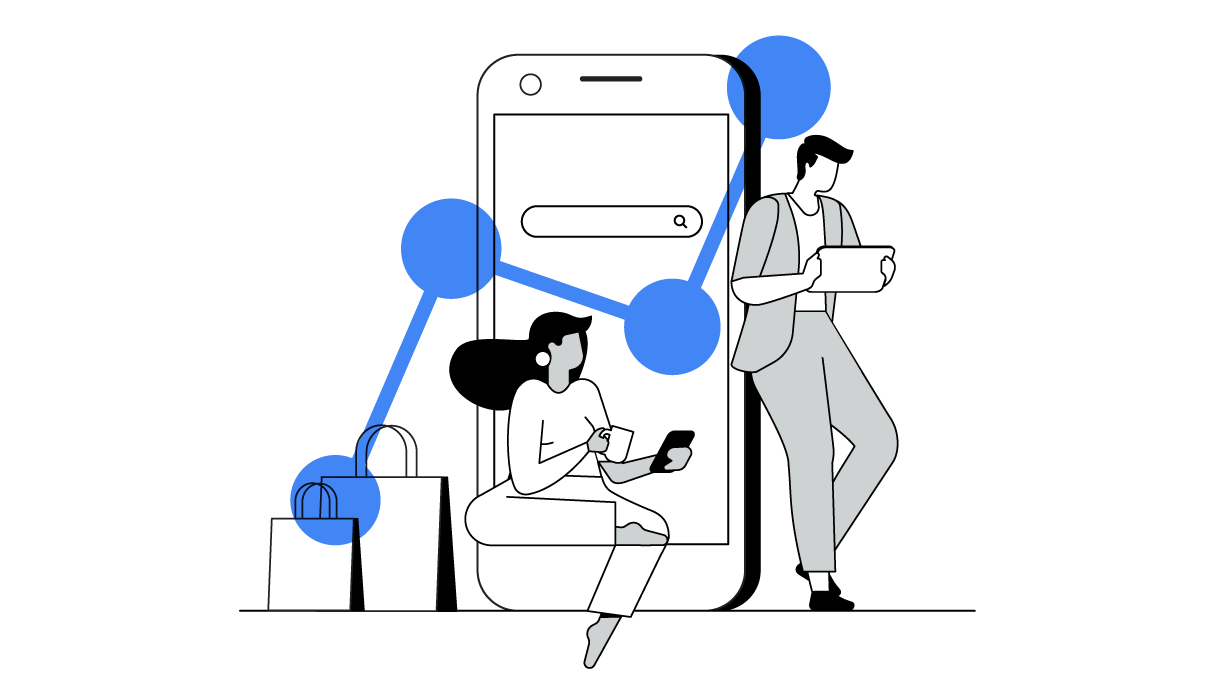Retailers have long dreaded showrooming – when people pull out their phones in a shop and, presumably, start looking for a cheaper, better product from the competition. It’s true that people are on their phones more than ever in shops. Mobile search queries that take place in a shop have grown 15% in recent years.1 But that’s not necessarily bad news.
To get to the bottom of what people are doing on their phones in shops – and help retailers craft a marketing strategy that will help those customers – we conducted new research. What we found is that people no longer follow a predictable and straight path to purchase. Now, they continue widening and narrowing their options as they shop. This applies to in-store shoppers too.

So how can you help customers looking for more information while they explore your shop? Here are four key things to consider.
Make it easy for shoppers to find answers before they get to the shop
Once a shopper has decided to visit your shop, they turn to mobile to plan the trip in advance. From getting brand recommendations to checking product availability to looking up opening hours, people arrive at the shop more knowledgeable than ever before. Make these details easy to find across your online experiences to get customers primed and ready to buy. For example, 41% of shoppers wish retailers would do a better job of sharing inventory information.2 Our data also shows that shoppers continue to hunt for deals while they’re in-store, and search online for things like “[retailer name] + in store vouvhers” or deal aggregators like RetailMeNot.3 Help customers get a head start by making this information readily available before they’ve walked through your doors.

Focus on yourself, not your competitors
A common misconception is that when a customer uses their phone to search in-store, they’re just trying to see which of your competitors sells something for the cheapest price. While comparison shopping does happen, most in-store shoppers are actually searching online for more information about your shop, brand or the products you offer. In-store shoppers are 4X more likely to search on Google for the retail brand of the shop they’re currently in compared to the next highest competitor, and there are 6X more Google searches for the retailer than for “amazon”. 4
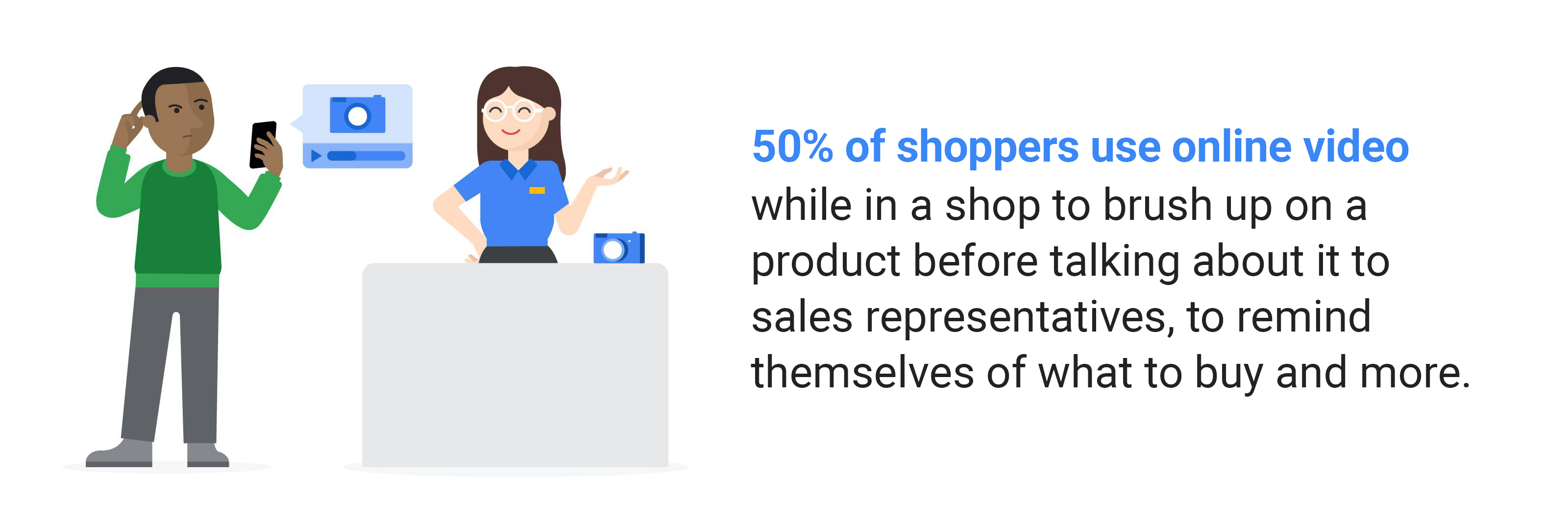
Empower the in-store shopper
People are also looking for other kinds of assistance, such as language assistance. Demand for translation help is quickly growing. In-store searches for Google Translate and “traductor” (“translator” in Spanish) climbed the rankings year over year in the majority of retailers we analysed. We also found that 50% of shoppers use online video while in shops to brush up on a product before talking about it to sales representatives, to remind themselves of what to buy and more.5
Moments like these create an enormous opportunity for marketers to provide fast and meaningful assistance that augments a customer’s in-store experience. Brands like Best Buy now expect that customers have done or will continue doing research on mobile when they’re in-store. That’s why it has set up the online and shop experiences to mirror each other. For example, Best Buy has extended the expertise of “Blue Shirt” sales associates online with buying guides on its website and YouTube video tutorials for complex topics, like how to buy the right lens for your DSLR camera.
Upgrade the in-store experience
When people are in your shop, they’re getting more done than just their shopping. They’re also finding ways to pass the time and answer everyday questions while they shop. Checking social networks and the weather are popular in-store searches. They’re even brainstorming their next meal. Restaurant and food-related searches like “restaurants”, “restaurants near me” and “food near me” commonly appear in the top 20 searches for many retailers.6
Marketers are taking advantage of these insights by investing in “experiential retail” that gives shoppers more reasons to stay and invest time in their shops beyond just shopping. Ralph Lauren is one brand integrating hospitality and culinary arts into its retail shops to engage consumers with experiential and unique expressions of the brand. Ralph’s coffee shops and restaurants are located within Ralph Lauren flagship shops in New York, Tokyo and Hong Kong, allowing customers to relax and enjoy breaks from shopping.
As you build your omnichannel and in-store strategies, consider what people are searching for before and after they arrive at your shop. Whether it’s helping them find the right product, tracking down voucher codes or even stopping hunger pangs, predicting their intent will help get you ready to anticipate and deliver on those needs.

